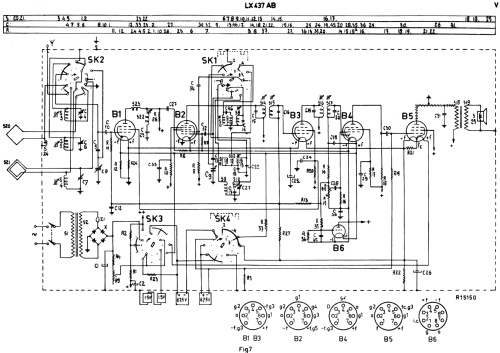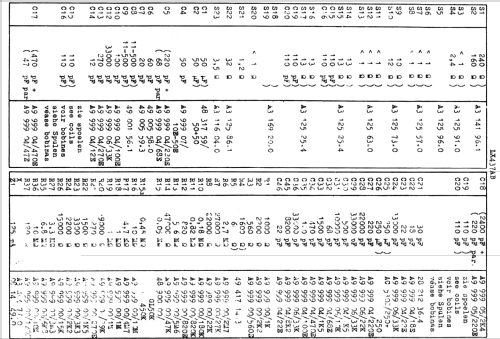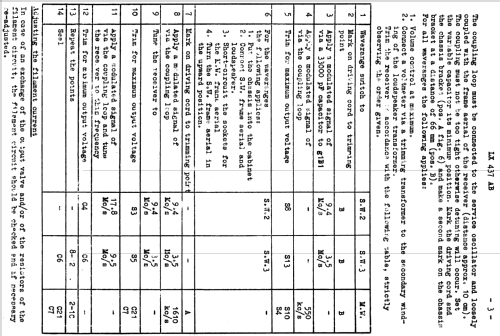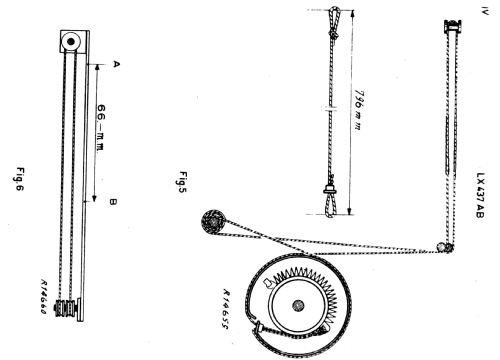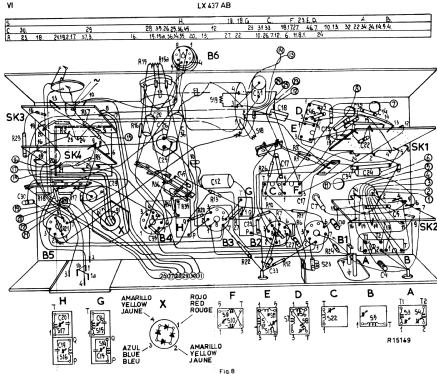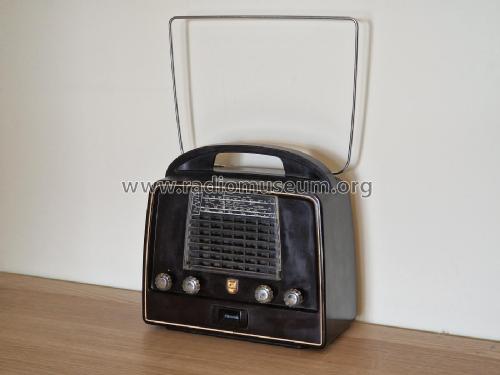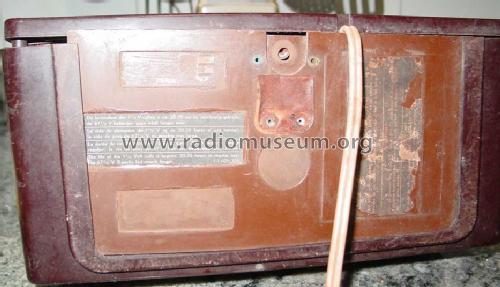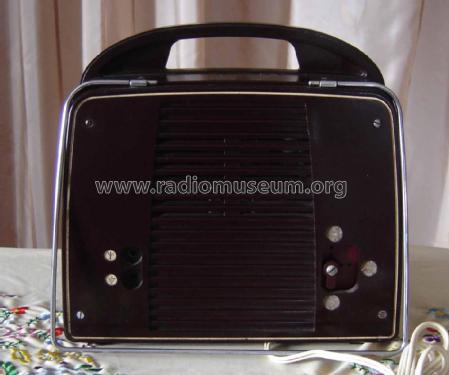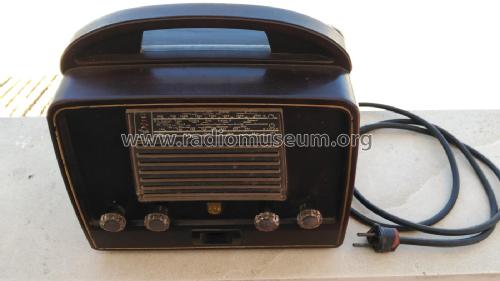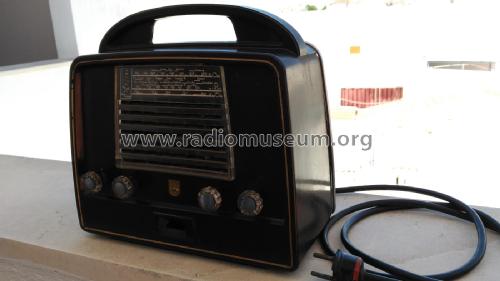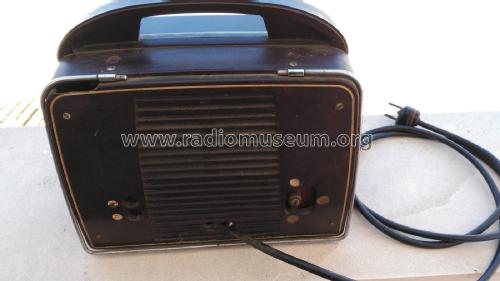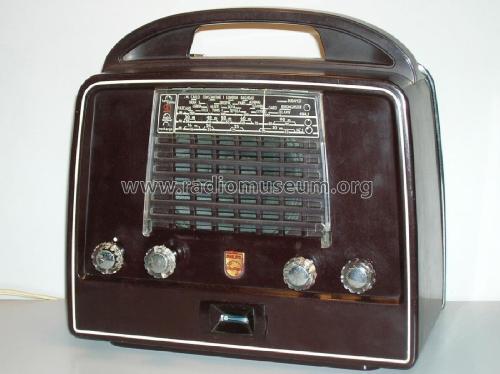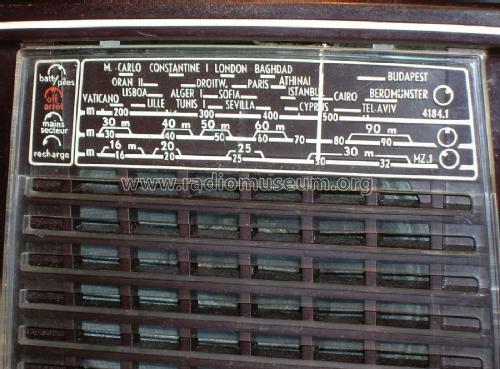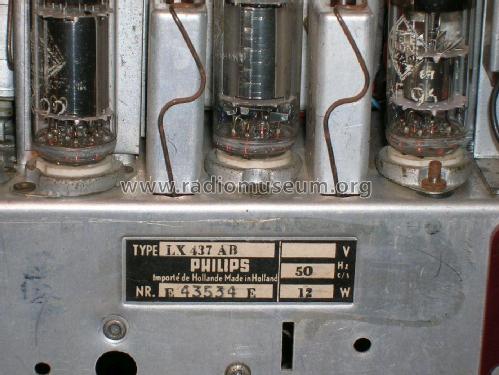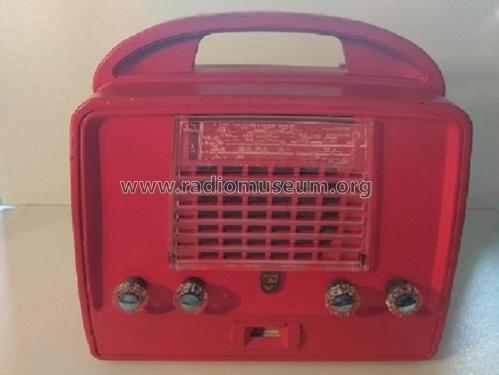- Land
- Niederlande
- Hersteller / Marke
- Philips; Eindhoven (tubes international!); Miniwatt
- Jahr
- 1954/1955
- Kategorie
- Rundfunkempfänger (Radio - oder Tuner nach WW2)
- Radiomuseum.org ID
- 114083
Klicken Sie auf den Schaltplanausschnitt, um diesen kostenlos als Dokument anzufordern.
- Anzahl Röhren
- 6
- Anzahl Transistoren
- Halbleiter
- Selengleichrichter
- Hauptprinzip
- Super mit HF-Vorstufe; ZF/IF 452 kHz; 2 NF-Stufe(n)
- Anzahl Kreise
- 6 Kreis(e) AM
- Wellenbereiche
- Mittelwelle und 2 x Kurzwellen.
- Betriebsart / Volt
- Netz- / Batteriespeisung / AC 110; 150; 220 / 2 x 1,5 & 2 x 67,5 Volt
- Lautsprecher
- Dynamischer LS, keine Erregerspule (permanentdynamisch) / Ø 5 inch = 12.7 cm
- Belastbarkeit / Leistung
- 0.3 W (Qualität unbekannt)
- Material
- Bakelit (Pressstoff)
- von Radiomuseum.org
- Modell: LX437AB - Philips; Eindhoven tubes
- Form
- Reisegerät > 20 cm (netzunabhängig betreibbar)
- Abmessungen (BHT)
- 260 x 250 x 120 mm / 10.2 x 9.8 x 4.7 inch
- Bemerkung
-
The Philips receiver LX437AB features a tuned rf preamplifier with aperiodic coupling to the mixer stage.
Power consumption from AC mains: 17W. Selenium rectifier bridge.
- Originalpreis
- 1,950.00 PTE
- Literaturnachweis
- -- Original prospect or advert
- Literatur/Schema (1)
- -- Original-techn. papers.
- Autor
- Modellseite von Mario Coelho angelegt. Siehe bei "Änderungsvorschlag" für weitere Mitarbeit.
- Weitere Modelle
-
Hier finden Sie 5270 Modelle, davon 4414 mit Bildern und 3455 mit Schaltbildern.
Alle gelisteten Radios usw. von Philips; Eindhoven (tubes international!); Miniwatt
Sammlungen
Das Modell befindet sich in den Sammlungen folgender Mitglieder.
Forumsbeiträge zum Modell: Philips; Eindhoven: LX437AB
Threads: 1 | Posts: 3
Hi.Radiophiles, It came to me for repair/recover one portable radio LX 437 AB.I don't have its schematic,but supose may be similar to model LI 437/AB.My problem is that I don't have the correct filament tensions when switched to the mains.As a matter of fact,the wires that should conect to the batteries have been cut so I can not test it with the batteries once they are not there.And some help would be very welcome if somebody could explain me the wiring of the tubes filaments,once I find very dificult to understand the complexity of the switch wiring together with the dificult access to components and lack of data of voltages.
May I wish to all members and their families a Merry Christmas and a Happy new Year with greetings from our Sunny Algarve!
Antonio Barros-Regada, 21.Dec.13
